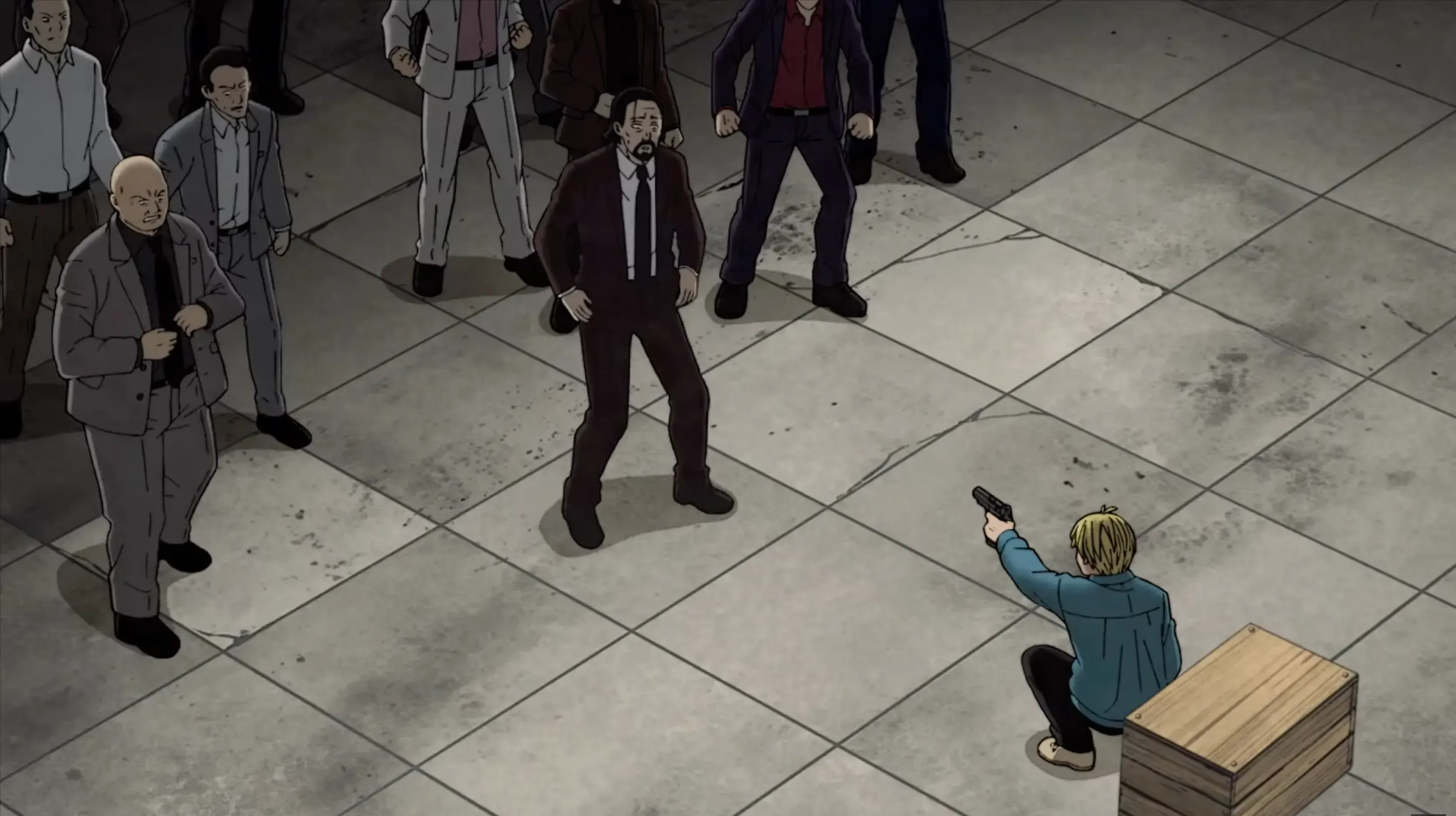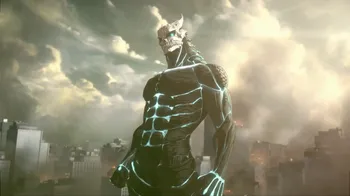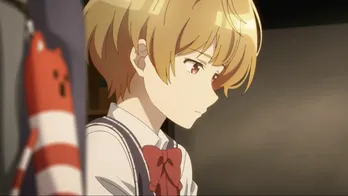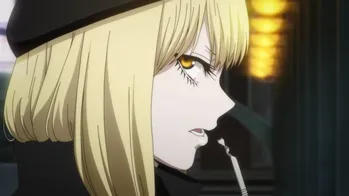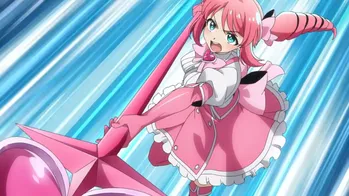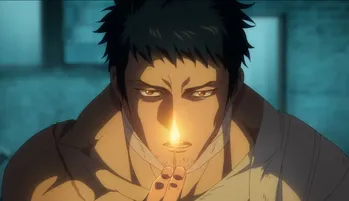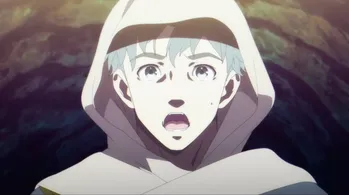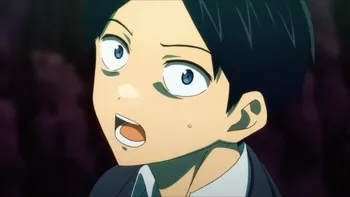The rumble of a toppled building, the sharp scent of steamed pork buns, the weary sigh of a retired hitman just trying to enjoy his snack— these fragments defined the chaotic, genre-blending world that stormed onto Netflix in January 2025. Sakamoto Days, the adaptation of Yuto Suzuki's beloved Shonen Jump manga, didn't just arrive; it carved a niche with its potent cocktail of high-octane action, unexpected belly laughs, and the surprisingly relatable plight of Taro Sakamoto—a man whose past won’t let him enjoy the quiet life he built. Now, as the dust settles from Part 1's explosive debut, a new trailer has shattered the calm: Part 2 arrives exclusively on Netflix on July 14, 2025 . This isn't merely a continuation; it's an escalation, promising deeper dives into Sakamoto’s shadowy history, higher stakes threatening his fragile domestic peace, and a desperate battle where comedy and carnage collide with greater intensity.
The anticipation crackles like static before a storm. Part 1 spent 11 episodes establishing Sakamoto’s precarious balancing act: doting convenience store owner by day, reluctantly lethal protector when ghosts from his assassin days came calling. It introduced us to his makeshift family – the perceptive Shin, the fiercely energetic Lu, his patient wife, and their young daughter – while pitting them against increasingly dangerous foes dispatched by the enigmatic villain known only as "X" or "Slur." Yet, its conclusion wasn't an ending, but a detonator. The newly released Part 2 trailer thrusts viewers into the aftermath, showcasing a three-way war erupting between Sakamoto's crew, the elite hitman organization known as The Order, and Slur's unleashed forces . The tagline says it all: "Expect bigger fights, more laughs, and unique characters that you’ll fall in love with" . But beneath the surface of this promise lies a critical question: Can Part 2 deliver the kinetic brilliance of Suzuki's manga while addressing the critiques that shadowed its initial run?
I. The Countdown to Chaos: Release Strategy & Production Insights
Netflix’s confirmation of the July 14, 2025, release date ends months of speculation fueled by the platform's initial announcement of a mid-year return. The strategic timing places Part 2 squarely in the competitive summer anime season, a bold move signaling confidence in its global appeal, proven by Part 1's consistent presence in Netflix's Top 10 across numerous countries during its initial run . This two-part structure for Season 1, increasingly common for major Netflix anime licenses, allows for focused production periods and sustained audience engagement, contrasting sharply with the platform's binge-drop model for originals .
Trailer Hints & Narrative Setup: The official trailer is more than just a hype reel; it's a narrative roadmap. It vividly depicts the core threat of Part 2: the Death Row Prisoners arc. These aren't just hired thugs; they are notorious, unhinged criminals deliberately freed by Slur to systematically dismantle Sakamoto's life. The stakes are terrifyingly personal – quick cuts show Sakamoto's wife, the very reason he abandoned his violent past, under direct threat . This move by Slur crosses a line, transforming the conflict from professional rivalry into a visceral, deeply personal war. The trailer’s frenetic energy suggests a significant ramping up of the action choreography, showcasing brief glimpses of fluid combat, high-flying maneuvers, and chaotic group battles that aim to address a key fan concern from Part 1 .
Production Realities & Fan Concerns: While the trailer promises spectacle, it arrives against a backdrop of significant discourse within the manga fanbase regarding Part 1's adaptation. Criticisms centered primarily on the perceived stiffness of some action sequences compared to the dynamic, almost balletic flow of Suzuki's artwork, and the omission of smaller, character-building "slice-of-life" moments that provided crucial breathing room and humor in the manga . Studio TMS Entertainment faced the unenviable task of translating Suzuki's uniquely detailed and kinetic style into consistent animation. Director Masaki Watanabe and animation producer Genki Ito have openly discussed the challenges. In a revealing behind-the-scenes featurette focusing on Lu's introduction scene (Episode 2), Watanabe spoke of "painful memories" and meticulous effort spent trying to convey impact and personality – even resorting to elongating the perceived height of Lu's jump for dramatic effect . They acknowledged the difficulty in making every move feel "fast, precise, and powerful," a core tenet of the manga's appeal .
The relatively tight turnaround between Part 1's conclusion in late March 2025 and Part 2's July release suggests major overhauls to the animation pipeline might be logistically difficult . However, the trailer, combined with the producers' evident awareness of fan feedback, offers cautious optimism that lessons were learned. The focus may shift towards smarter storyboarding, more impactful key animation in crucial fights, and potentially leveraging the higher stakes and more outlandish abilities of the Death Row inmates to naturally demand more dynamic visuals.
II. Unshackling the Past: Plot Expectations & Narrative Depth
Part 1 concluded its adaptation around Chapter 37 of the ongoing manga, leaving viewers at the precipice of the Death Row Prisoners arc . Part 2 plunges headlong into this extended narrative, which serves as the series' first major saga and a significant turning point.
The Death Row Onslaught: Slur's strategy is psychological warfare as much as physical annihilation. By unleashing these uniquely dangerous criminals – each boasting distinct, often bizarrely powerful abilities – he aims to shatter Sakamoto's resolve by attacking what he cherishes most: his family and his hard-won normalcy. Expect relentless assaults, not just on Sakamoto himself, but on his store, his neighborhood, and his loved ones. The trailer's ominous tone underscores this shift from episodic threats to a sustained, organized campaign designed to break the legend . This arc allows the narrative to explore darker themes while maintaining its signature humor, often arising from the sheer absurdity of the situations or the personalities involved.
Shifting Dynamics & Lu's Role: Part 2 also marks a significant evolution in the core cast's dynamics. Notably, Lu Shaotang's role diminishes considerably following this arc in the manga source material . While a fan favorite for her energetic combat style, her reduced prominence narratively allows other characters, both established and new, to step into the spotlight. The trailer hints at deeper exploration of Shin's burgeoning abilities and his unwavering loyalty, as well as the pressures mounting on Sakamoto as the threats escalate beyond mere bounty hunters to strategic, existential dangers orchestrated by a cunning foe.
Introducing New Legends & Villains: The Death Row arc introduces several pivotal characters who leave a lasting mark on the series. Chief among them is Gaku, a flamboyant, incredibly powerful inmate whose chaotic energy and formidable skills make him an instant standout. Netflix's announcement confirmed the high-profile casting of Kōki Uchiyama (renowned for roles like Tomura Shigaraki in My Hero Academia and Meruem in Hunter x Hunter) as Gaku's voice, a major coup signaling the character's importance . His presence promises electrifying confrontations and a unique brand of menace mixed with dark humor. Other inmates, each with their own twisted motivations and lethal talents, will test Sakamoto and his allies in wildly different ways, forcing creative and often hilarious solutions amidst the chaos.
III. Character Crucible: Evolution, Conflict & New Faces
Part 2 isn't just about bigger fights; it's about deeper dives into the characters caught in the crossfire, their bonds tested like never before.
Sakamoto's Breaking Point: The core tension of the series – Taro Sakamoto, the loving family man versus the unparalleled legendary assassin – reaches a fever pitch. Seeing his wife directly threatened, as hinted in the trailer, fundamentally changes the calculus . How much of his pacifist ideals can he maintain when the people he vowed to protect are in the crosshairs of truly monstrous individuals? Expect moments where the jovial facade cracks, revealing glimpses of the cold, efficient killer beneath, not just out of necessity, but perhaps out of reawakened rage. This internal conflict is the dramatic heart of Part 2.
Shin's Ascent & Loyalty: Shin Asakura, initially a young, somewhat naive lookout thrust into Sakamoto's orbit, faces his own crucible. His unique ability to "read minds" (or more accurately, surface thoughts) becomes increasingly vital in navigating the complex traps and strategies employed by Slur and the Death Row inmates. Part 2 will challenge Shin not just physically, but morally, forcing him to mature rapidly in the face of horrific threats. His unwavering loyalty to Sakamoto and his makeshift family will be pushed to its limits.
The Enigma of Slur & The Order: While the Death Row inmates provide the immediate muscle, the shadowy figures pulling the strings move further into focus. Slur's motivations remain deliberately obscured, but his actions speak of a deep, personal vendetta against Sakamoto or the world he represents. The trailer also highlights increased involvement from The Order, the organization Sakamoto once belonged to . Their role is complex – are they allies against the common threat Slur poses, or do they have their own agenda regarding the rogue legend and the chaos engulfing the assassin underworld? This three-way dynamic adds layers of intrigue beyond simple hero-villain confrontations.
Gaku: A Star Antagonist Enters: Kōki Uchiyama's casting as Gaku is a major event for the anime. Gaku embodies a terrifying blend of childlike glee and monstrous power. He doesn't just fight; he plays, treating destruction and combat as the ultimate game. Uchiyama's vocal range, capable of shifting from unsettling calm to manic intensity on a dime, is perfectly suited to bring this unpredictable and immensely dangerous villain to life . His interactions with Sakamoto promise to be both darkly humorous and brutally intense, pushing Sakamoto physically and testing his resolve to avoid killing.
IV. Beyond the Frames: Animation Evolution & Creative Responses
The conversation surrounding Sakamoto Days Part 2 is inextricably linked to the discourse on its animation. While Part 1 found strong viewership among general Netflix audiences, a vocal segment of the manga readership expressed disappointment, feeling the adaptation didn't consistently capture the fluid, impactful dynamism of Suzuki's panels .
Addressing the "Stiffness" Critique: The core criticism centered on action sequences sometimes relying heavily on impactful still frames or limited animation cycles, lacking the sustained, flowing choreography seen in top-tier action anime like Jujutsu Kaisen or Demon Slayer. Some fans also missed the smaller, comedic "slice-of-life" moments trimmed from the manga, which provided character depth and tonal balance . Director Watanabe's comments on the painstaking effort behind Lu's introductory scene – tweaking perspective for impact, striving for speed and power – reveal an awareness of these demands .
Trailer Glimmers & Strategic Focus: The Part 2 trailer offers glimpses of more elaborate sequences: faster-paced exchanges, complex group skirmishes, and the unique, often physics-defying abilities of the Death Row inmates. These inherently demand more dynamic animation. While a complete overhaul in the brief production window seems unlikely, the focus appears to be on strategic elevation:
- Prioritizing Key Battles: Investing more resources and time into the major confrontations, especially those involving characters like Gaku and other high-profile inmates, ensuring these pivotal moments truly shine.
- Leveraging Source Material Strengths: The Death Row arc features inherently more over-the-top and visually distinct powers compared to Part 1's initial foes. This provides natural opportunities for more creative and fluid animation.
- Refined Storyboarding: Learning from Part 1, utilizing camera angles, pacing, and impactful "sakuga" moments more effectively to convey speed and impact even within constraints.
- Balancing Tone: Hopefully retaining more of the small, humorous character moments that define the series' unique charm, providing necessary respite between action bursts.
A New Sonic Identity: Part 2 also introduces a fresh soundscape with the new opening theme song, "Method" by the acclaimed Japanese rock band Kroi . This shift in musical tone likely reflects the darker, more intense narrative direction of the Death Row arc, replacing the potentially lighter tone of the Part 1 opening.
V. Thematic Expansion: Family, Legacy & the Cost of Peace
Beyond the punches and laughs, Sakamoto Days Part 2 promises to delve deeper into its core themes, amplified by the heightened stakes.
The Fragility of Normalcy: Sakamoto's convenience store isn't just a setting; it's a symbol of the peaceful life he clawed back from a world of violence. Slur's assault, specifically targeting his home and family, is a direct attack on this symbol. Part 2 forces Sakamoto and the audience to question just how sustainable this "normal life" can be when his past is an active, murderous force. How much can he truly leave behind?
Violence Begets Violence: The introduction of the Death Row inmates, themselves products of a brutal system, and Slur's own shadowy motives, suggest exploration of cycles of violence and vengeance. Sakamoto's refusal to kill, even when facing irredeemable monsters, becomes a central philosophical conflict. Is his pacifism noble or naive in the face of such existential threats? Can he protect his family without fully resurrecting the killer he buried?
Found Family vs. Blood Ties: The makeshift family unit of Sakamoto, Shin, and Lu (while she remains central in this arc) is core to the series' heart. Part 2 will test these bonds under extreme duress. Contrasting this is Sakamoto's biological family – his wife and daughter – whose safety becomes the ultimate driving force, potentially creating tension between his two worlds.
VI. Conclusion: Anticipating the Assassin's Next Move
Sakamoto Days Part 2 arrives on July 14, 2025, burdened with high expectations but armed with potent narrative ammunition. The transition into the Death Row Prisoners arc marks the series' shift from establishing its quirky premise to delivering its first major, sustained narrative thrust. The stakes have never been higher, the threats never more personal, and the potential for both jaw-dropping action and genuine emotional resonance has skyrocketed.
The challenges of translating Suzuki's kinetic artistry remain, but the trailer and production insights suggest a focused effort to elevate the spectacle where it matters most. The introduction of compelling new characters like the maniacal Gaku, brought to life by the formidable Kōki Uchiyama, injects fresh energy and menace. Most importantly, the core conflict – Sakamoto's desperate struggle to shield his peaceful present from the bloody shadows of his past – reaches its most potent and relatable form as his family becomes the direct target.
Will Part 2 fully silence the critiques of its animation with strategically brilliant action sequences? Can it maintain the perfect balance of uproarious comedy and brutal stakes that defines the manga? The answers await on July 14th. One thing is certain: Sakamoto's days of relative peace are officially over. The battle for his family, his store, and his very soul is about to erupt, and Netflix is once again the arena. Prepare for a summer where the checkout counter becomes a front line, and the unassuming store owner reveals why he was once the most feared legend in the underworld. The second round is about to begin, and it promises to be unforgettable.


